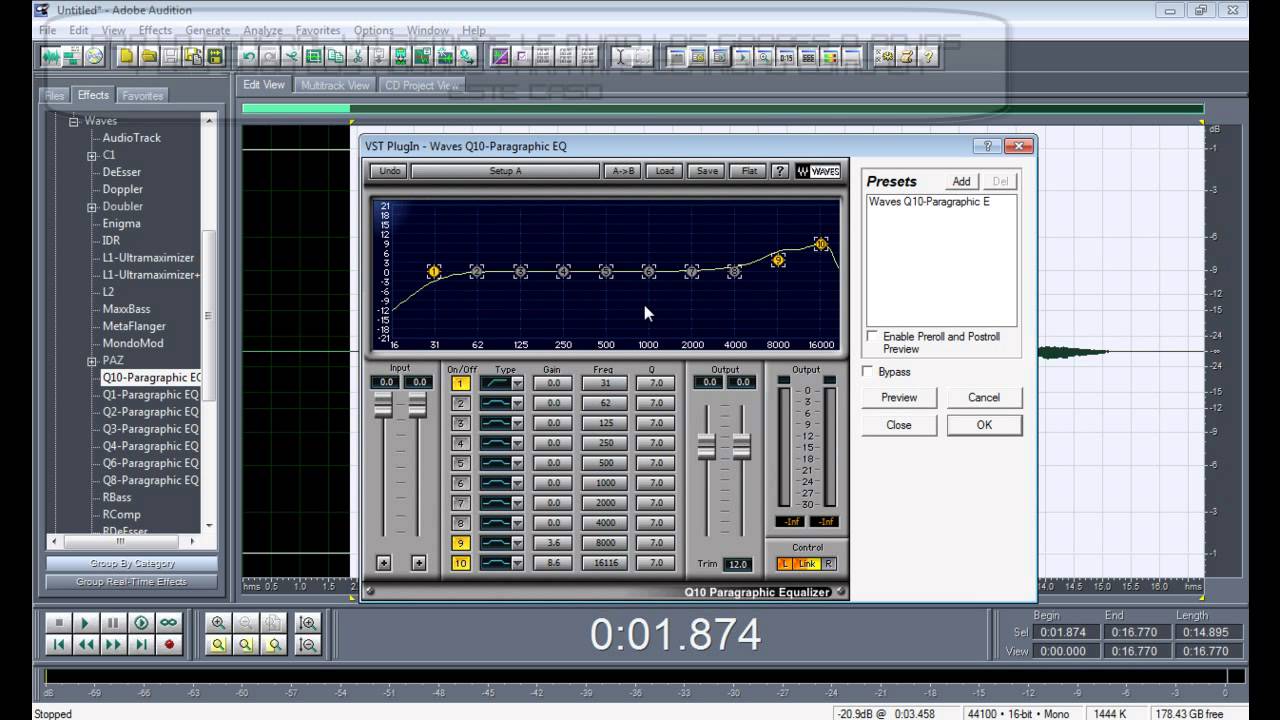


The world's largest selection of pro-quality audio plugins, from the industry's most popular equalizers, compressors and analog models, to award-winning reverbs, delays, effects, virtual instruments, surround sound tools and more. To locate plug-ins or manage their visibility in the application, use the Audition Audio Plug-In Manager. Note: VSTi and virtual instrument synthesis plug-ins are not supported at this time.

Having a clear objective helps you how to set your compressor to get the desired sound.Adobe Audition supports third-party 64-bit audio plug-ins in VST 2.4, VST 3.0 formats for macOS and Windows, and Audio Units for macOS. You need to have some objective before you compress.

Examine why you should need to compress in the first place. If you are new to audio compression, you should need to read this introductory tutorial on dynamic range compression. In multi-track view, it is non-destructive because the settings are implemented in sessions rather than to the direct audio wave.ģ.) Go to File – Open and then load the audio wav file that needs compression. Make sure to back up the original audio before saving any changes. However, take note that doing changes in Edit view can destroy the original audio material. But let’s just use the Edit view because it’s simple. Bear in mind that you can also implement this process in the multi-track view by loading the built-in effects in multi-track racks. To get started, follow the steps below:Ģ.) Go to Edit View. This tutorial is written using Adobe Audition 1.5 but the concepts illustrated in this tutorial can be applied to modern versions. In this way, you will be relying on the built-in compressor included in Adobe Audition called as the “dynamics processor”. This is a tutorial how to implement dynamics processing or compression in Adobe Audition without plug-in.


 0 kommentar(er)
0 kommentar(er)
